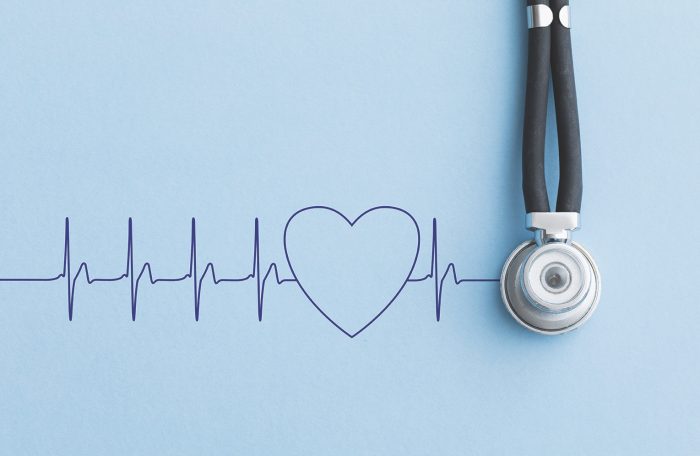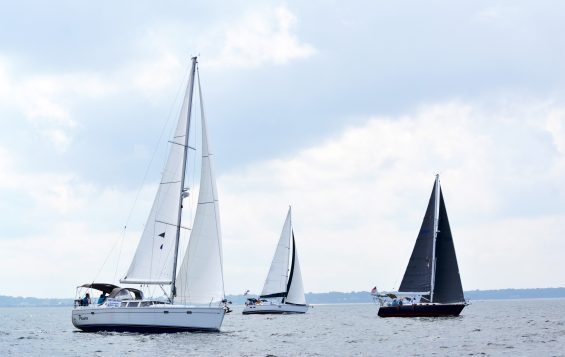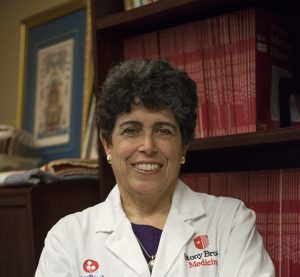Paint Port Pink, Mather Hospital’s annual month-long breast cancer community awareness outreach, kicks off Sunday, October 1 with the lighting of pink lights by community partners in Port Jefferson, Port Jefferson Station, and surrounding communities. Paint Port Pink’s goal is to raise awareness about breast cancer, encourage annual mammograms, and bring the community together to fight this disease.
Lamp posts along Main Street in Port Jefferson will glow with pink lights, along with the Theatre Three marquee and many store windows. Many related events will be held throughout the month.
“Pints for Pink,” hosted by Po’Boy Brewery, 200 Wilson Street in Port Jefferson, returns on Thursday, Oct. 5 to celebrate the survivors and educate the community. Attendees can sample craft beers and ciders while receiving health information. The $25 fee includes registration for the 2024 Northwell Health Walk at Port Jefferson. Proceeds support the 2024 Walk for the benefit of the Fortunato Breast Health Center at Mather Hospital. Register at matherhospital.org/pints-for-pink.
Decorate your business window for a chance to win tickets to a 2024 concert at Jones Beach. Send photos of your window by Sunday, October 15 to [email protected].
The EmpowerHER: Navigating Women’s Wellness symposium on Thursday, Oct. 19 from 6 to 8 p.m. at the Port Jefferson Village Center, 101 East Broadway, Port Jefferson features a panel of Mather physicians discussing different aspects of women’s health and well being. Co-sponsored by Decision Women in Commerce and Professions, the $20 admission fee includes the symposium, a buffet dinner, a glass of wine and registration for the 2024 Northwell Health Walk at Port Jefferson. Register at matherhospital.org/EmpowerHer.
Friday, October 20 is Wear Pink Day/National Mammography Day and everyone — including your pets — are encouraged to get their pink on. Post photos on social media with #paintportpink and send them to [email protected] to be posted on the hospital’s Facebook page.

Photo from Mather Hospital
The ever popular “Pink Your Pumpkin” contest returns and encourages everyone to get creative with their pumpkins for a cause. Photos should be emailed to [email protected] by Tuesday, Oct. 24 and posted on social media with #paintportpink. The winner will receive a $100 gift card.
A full calendar of events and a list of Paint Port Pink community partners offering promotions to benefit The Fortunato Breast Health Center is available at www.paintportpink.org. Call 631-476-2723.
Paint Port Pink is sponsored by Decision Women in Commerce and Professions, Riverhead Toyota, Lippencott Financial Group, New York Cancer & Blood Specialists, Precision Lawn Irrigation, Po’ Boy Brewery and Tuscany Gourmet Market.
Five things everyone should know about breast health
Breast cancer is the most common cancer in women in the U.S., except for skin cancers, representing about 30 percent (or one in three) of all new female cancers each year. Breast cancer is the second leading cause of cancer deaths for women in the U.S. after lung cancer, according to the American Cancer Society (ACS). Every two minutes someone is newly diagnosed with invasive breast cancer according to the Breast Cancer Research Foundation. Only one in three women over 40 have an annual mammogram.
“It is important to maintain breast health and the easiest way to do that is to obtain your annual screening mammogram,” said Lan Chan, MD, radiologist at Mather Hospital’s Fortunato Breast Health Center. “You should not ignore your breasts just because there is no family history of breast cancer. In fact, three out of four women diagnosed with breast cancer have no family history of breast cancer.”
According to Dr. Chan, five things everyone should know about breast health are:
1. Major health organizations including the American Cancer Society, American College of Radiology and Society of Breast Imaging recommend starting screening mammography at age 40.
The ACS reports that the chance of a woman having invasive breast cancer in her life is about one in eight. That is why increased awareness, education and early detection are important parts of breast health care. A mammogram can reveal a tumor as much as two years before you or your healthcare professional can feel it. That’s why it’s important to schedule your mammogram.
2. Obesity has been linked to breast cancer. Maintaining a healthy weight can decrease the risk of breast cancer.
Having more fat tissue can increase your chance of getting breast cancer by raising estrogen levels, according to the ACS. Also, women who are overweight tend to have higher levels of insulin, which have been linked to some cancers, including breast cancer.
3. Breastfeeding has health benefits for mothers. It has been shown that breastfeeding decreases the risk of breast cancer. Many studies suggest that breastfeeding for a year or more slightly reduces a woman’s overall risk of breast cancer, with longer duration associated with greater reduction, according to the ACS.
4. Women at high risk for breast cancer can obtain supplementary screening MRI as another form of imaging to detect breast cancer.
5. Men should not ignore lumps on their chest. Men can also develop breast cancer.
The ACS notes that while breast cancer occurs mainly in women, men can get it, too. Men have breast tissue and can develop breast cancer. Cells in nearly any part of the body can become cancer and can spread to other areas. The American Cancer Society estimates for men in the United States for 2023 about 2,800 new cases of invasive breast cancer will be diagnosed and about 530 men will die from breast cancer
Schedule a mammogram
The Fortunato Breast Health Center at Mather Hospital, 75 North Country Road, Port Jefferson uses state-of-the-art breast imaging technology in a warm and assuring environment with a commitment to giving you personalized breast healthcare.
Their staff of professionals provides 3D mammograms and offers individualized follow-up care, education for patients, families, and the community, as well as breast cancer support groups.
Their Breast Center radiologists are specialists who only read breast imaging studies and look back as far as possible at your history of breast images for any subtle changes or abnormalities to provide the most accurate reading.
The Breast Health Center has also partnered with the Suffolk Cancer Services Program (CSP) to provide free breast cancer screenings to individuals who qualify. The CSP provides breast cancer screenings to women age 40 and older without health insurance in Suffolk. If any follow-up testing is needed, the CSP will provide those tests too. If cancer is found, CSP will help enroll people who are eligible in the NYS Medicaid Cancer Treatment Program for full Medicaid coverage during treatment.
To find out if you are eligible for free screenings or to schedule your annual mammogram, call 631-476-2771.






























